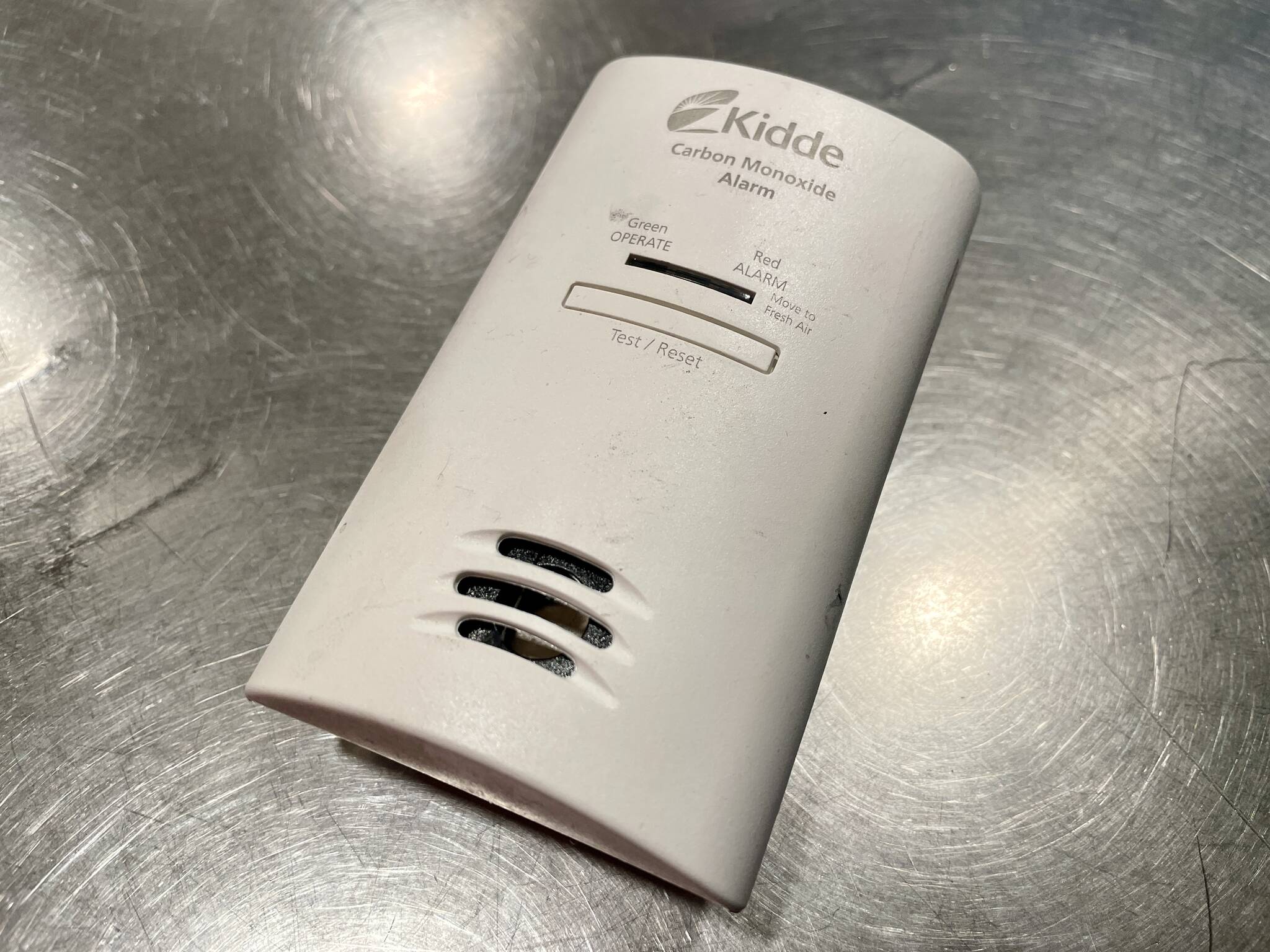A concerned resident calling 911 late Sunday evening about their carbon monoxide alarm in Aberdeen turned into a full-scale evacuation of the apartment after responding firefighters discovered dangerously high levels of the gas in the building.
No injuries were reported, but 13 people were temporarily evacuated and the building ventilated after firefighters discovered carbon monoxide present in quantities as great as 800 parts per million (PPM) — as much as 80 times the regular amount for a building with gas-fired appliances, according to an Aberdeen Fire Department news release.
“One of the occupants had a carbon monoxide detector that was going off in her apartment, so she called 911, as she should have. As crews arrived, they quickly recognized there was a carbon monoxide leak in the building,” said Fire Chief Dave Golding in an interview. “It was a slower process than we’d like but we were able to get everyone out safely.”
AFD got in touch with Cascade Natural Gas, Golding said, which responded to the building, located on East 4th Street.
“That’s part of our response plan to call them. They are the subject matter experts,” Golding said. “They verified our readings of elevated readings of carbon monoxide.”
Readings in the building ranged from about 60 ppm to 800 ppm, Golding said. Crews cut the gas to building, which was primarily being used to heat hot water tanks, and ventilated the structure down to safe levels, Golding said, a process that took about two hours.
The cause was eventually found to be improperly installed water heaters, according to the news release.
Trust the instruments
Firefighters found that a number of apartments had removed or disabled their carbon monoxide detectors, including one resident who said it wouldn’t stop going off.
“There were at least three other occupants of the building that had their carbon monoxide detectors go off but did not call 911 for whatever reason; thinking it was a false alarm, or a malfunctioning detector,” Golding said. “If your carbon monoxide detector is going off, call 911. We can come in with a detector to check the levels and see if that’s the issue or not. We’re more than happy to come out and check for that.”
If not for the resident who called it in, Golding said, the event could have played out much differently.
“Luckily, the one resident did call us. If she did not, this could have been a catastrophic event. There could have been a large loss of life in that building,” Golding said. “The time of day of this incident, it could have been much different if that one person did not heed the warning of their carbon monoxide alarm.”
Sustained exposure at 800 ppm denies oxygen that the body needs; at those levels, it could lead to serious medical issues, up to and including the possibility of death, Golding said. Symptoms of carbon monoxide poisoning can include severe headaches, dizziness, altered mental status or confusion, nausea and vomiting, and eventual unconsciousness and death.
“As those levels continue to rise, the symptoms get worse,” Golding said.
Aberdeen rarely sees events like this, Golding said. If the levels had gotten higher and residents had started exhibiting symptoms, it could have been a much more complicated scenario.
“We get occasionally a smaller leak where the levels might be a little elevated, but not to this extreme,” Golding said. “In recent memory, this is one of the higher readings we’ve had.”
Best practices
If the alarm goes off, you should listen to it, Golding said. A working carbon monoxide detector is the only way to tell if your carbon monoxide levels are creeping up, Golding said; human senses can not detect the gas.
“The thing with carbon monoxide is it’s odorless, it’s tasteless, it’s invisible. You can’t tell it’s there without the detector. There’s no warning,” Golding said. “We highly recommend that any home that has any sort of gas fired appliance have a working carbon monoxide detector. That could be propane or natural gas.”
Furnaces, water heaters, dryers and stoves are common gas-fired appliances, Golding said. Having a carbon monoxide detector should be the same as having a smoke detector; test it once a month, change the batteries when the clocks change, listen to it if it goes off.
“Heed the warnings of your alarms, especially your carbon monoxide alarm. Smoke you can see. Carbon monoxide, you cannot,” Golding said. “If you alarm goes off, call 911, and get out to fresh air. We’re more than happy to come investigate the situation and make sure it is not something like this.”
Contact Senior Reporter Michael S. Lockett at 757-621-1197 or mlockett@thedailyworld.com.



